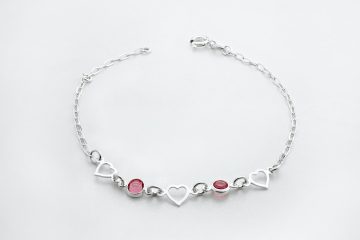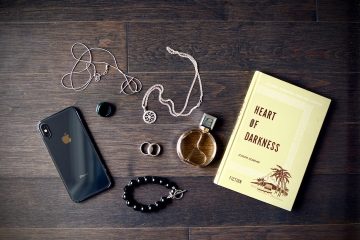Introduction
When it comes to accessorizing an outfit, nothing exudes elegance and sophistication quite like a beautiful pearl necklace. The timeless allure of pearls has captured the hearts of women for centuries. However, finding the perfect bracelet to complement your pearl necklace can be a daunting task. With so many options available, it’s important to consider factors such as style, color, and material to create a harmonious and balanced look. In this article, we will explore various bracelet styles and provide guidance on how to select the ideal bracelet to enhance the beauty of your pearl necklace.
1. Understanding Pearl Necklaces
Before we delve into the world of bracelet pairings, let’s briefly discuss the different types of pearl necklaces. Pearls come in various shapes, sizes, and colors, each offering a unique aesthetic. The most common types of pearls include freshwater, Akoya, Tahitian, and South Sea pearls. Freshwater pearls are known for their affordability and versatility, while Akoya pearls are prized for their lustrous appearance. Tahitian pearls, with their dark hues and exotic appeal, make a statement, and South Sea pearls are renowned for their large size and opulent beauty.
2. Classic Elegance: The Tennis Bracelet
If you’re seeking a bracelet that effortlessly complements a pearl necklace, look no further than the classic tennis bracelet. This timeless piece features a continuous line of diamonds or gemstones, creating a sleek and sophisticated look. The simplicity of the design allows the focus to remain on the pearls, accentuating their natural beauty. Opt for a tennis bracelet with diamonds or gemstones that match the color of your necklace’s clasp to create a cohesive and elegant ensemble.
3. Delicate Charm: The Chain Bracelet
For a more delicate and understated pairing, a chain bracelet can be an excellent choice. These bracelets feature a thin chain, often adorned with small gemstones or charms. The simplicity of the design allows the pearls to take center stage while adding a touch of femininity to your overall look. Consider a chain bracelet with a single pearl charm to create a subtle yet captivating combination.
4. Vintage Appeal: The Pearl and Filigree Bracelet
If you adore vintage-inspired accessories, a pearl and filigree bracelet can be a perfect match for your pearl necklace. Filigree refers to delicate metalwork characterized by intricate and ornamental designs. When combined with pearls, it creates a romantic and timeless aesthetic. Look for a bracelet with filigree detailing that complements the style of your necklace, whether it’s art deco, Victorian, or Edwardian. This pairing will add a touch of old-world charm to your ensemble.
5. Bohemian Chic: The Leather Wrap Bracelet
For those who prefer a more casual and bohemian look, a leather wrap bracelet can provide a unique and stylish pairing with a pearl necklace. These bracelets typically consist of a long strip of leather that wraps around the wrist multiple times. They often feature beads, charms, or pearls interspersed along the length of the bracelet, creating a layered and textured effect. Opt for a leather wrap bracelet with pearls in neutral tones to complement the elegance of your necklace while adding a touch of free-spirited charm.
6. Modern Glamour: The Cuff Bracelet
If you’re looking to make a bold statement, a cuff bracelet can be an excellent choice to pair with your pearl necklace. Cuff bracelets are wide and rigid, often featuring intricate designs or embellishments. Select a cuff bracelet made from a material that complements the color of your pearls, such as silver, gold, or rose gold. This combination of modern glamour and classic elegance will showcase your personal style and create a captivating ensemble.
7. Harmony in Colors: Gemstone Bracelets
To add a pop of color and create an eye-catching contrast, consider pairing your pearl necklace with a gemstone bracelet. Gemstone bracelets come in a variety of colors, allowing you to select a hue that complements or contrasts with the shades of your pearls. For example, if you have a strand of white pearls, a bracelet with sapphires or emeralds can create a stunning visual impact. Alternatively, if your pearls are colored, such as black Tahitian pearls, a bracelet with white diamonds can create a striking and harmonious combination.
8. The Power of Contrasts: Metal Bracelets
Sometimes, contrasting materials can create a captivating and unexpected pairing. Metal bracelets, such as silver or gold, can provide a striking contrast to the lustrous beauty of pearls. Opt for a sleek and minimalist design to let the pearls shine, or choose a bracelet with intricate metalwork for a more ornate and dramatic look. The contrast between the softness of pearls and the metallic sheen of the bracelet will add depth and visual interest to your ensemble.
9. Personalized Touch: Custom-Made Bracelets
If you’re unable to find the perfect bracelet to complement your pearl necklace, why not consider having one custom-made? This option allows you to create a truly unique piece that reflects your personal style and preferences. Work with a jeweler to select the materials, design, and any additional gemstones or charms you desire. A custom-made bracelet will not only beautifully complement your pearl necklace but also become a cherished heirloom that holds sentimental value.
10. Balancing Proportions: Bracelet Size and Length
When choosing a bracelet to pair with your pearl necklace, it’s crucial to consider the size and length of both pieces. Ideally, the bracelet should be proportional to the necklace, neither overpowering nor overshadowing it. If you have a chunky pearl necklace, opt for a wider and more substantial bracelet. Conversely, if your necklace is delicate, choose a dainty bracelet that won’t overwhelm its beauty. Additionally, consider the length of the bracelet to ensure it fits comfortably on your wrist without interfering with the necklace.
Conclusion
Pairing the right bracelet with your beautiful pearl necklace can elevate your overall look and add a touch of elegance and sophistication. Whether you opt for a classic tennis bracelet, a delicate chain bracelet, a vintage-inspired pearl and filigree design, or any other style, the key is to create a harmonious and balanced ensemble. Consider the style, color, material, and proportions to find the perfect bracelet that beautifully complements your pearl necklace, allowing you to make a stunning fashion statement.
FAQs
1. Can I wear a pearl bracelet with a pearl necklace?
While it is possible to wear a pearl bracelet with a pearl necklace, it’s essential to ensure they complement each other without overwhelming the overall look. Consider the size, color, and style of both pieces to create a balanced and harmonious combination.
2. Can I mix different types of pearls in my bracelet and necklace pairing?
Mixing different types of pearls in your bracelet and necklace pairing can create a unique and visually interesting ensemble. However, it’s crucial to consider how the pearls complement each other in terms of size, color, and luster to achieve a cohesive and harmonious look.
3. Should I match the metal of my bracelet with the clasp of my necklace?
Matching the metal of your bracelet with the clasp of your necklace can create a cohesive and polished look. However, don’t be afraid to experiment with contrasting metals for a more contemporary and eclectic style.
4. Can I wear multiple bracelets with a pearl necklace?
Wearing multiple bracelets with a pearl necklace can create a layered and textured look. However, be mindful of not overwhelming the overall ensemble. Ensure the bracelets complement each other and the necklace, creating a cohesive and balanced combination.
5. How can I ensure the bracelet and necklace don’t become tangled?
To prevent your bracelet and necklace from tangling, consider wearing a bracelet with a clasp on the opposite wrist from the necklace clasp. This will minimize the chances of the two pieces intertwining and ensure they remain visually distinct.




